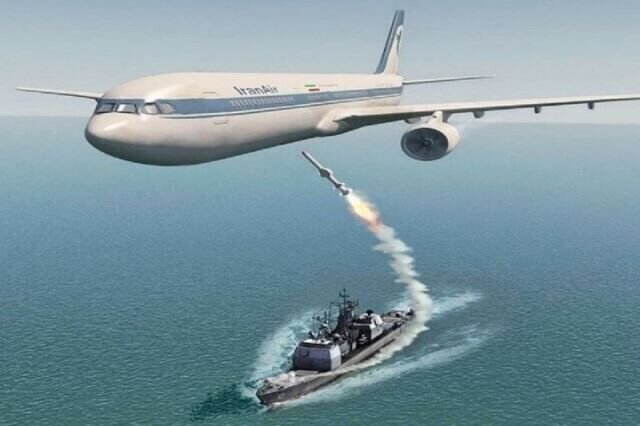The downing of Iran Air Flight 655 by the U.S. Navy is a tragic incident that remains a somber chapter in the history of international aviation and military conflict. On July 3, 1988, the civilian aircraft was shot down by the USS Vincennes, resulting in the deaths of all 290 passengers and crew on board. This catastrophic event significantly escalated tensions between the United States and Iran, contributing to an already volatile geopolitical landscape.

The Incident
Iran Air Flight 655 was a regularly scheduled flight from Tehran to Dubai, with a stopover in Bandar Abbas. On that fateful day, the Airbus A300B2-203 took off from Bandar Abbas and was climbing to its cruising altitude when it was mistakenly identified as a hostile aircraft by the crew of the USS Vincennes, a U.S. Navy guided missile cruiser patrolling the Persian Gulf.
The Vincennes, under the command of Captain Will Rogers, was engaged in a skirmish with Iranian gunboats. Amidst the chaos, the crew misidentified the ascending Airbus as an Iranian F-14 Tomcat fighter jet, which they believed posed a direct threat. Despite attempts to establish communication and verify the aircraft’s identity, the decision was made to launch two SM-2MR surface-to-air missiles, which struck the civilian plane, resulting in its catastrophic destruction.

Casualties and Impact
The downing of Flight 655 resulted in the loss of 290 lives, including 66 children. This incident not only caused profound grief and anger in Iran but also reverberated around the world, highlighting the grave consequences of military errors and the fragility of civilian aviation in conflict zones.
Geopolitical Repercussions
The immediate aftermath saw a severe deterioration in U.S.-Iran relations. Iran condemned the act as a deliberate and reckless attack on its civilians, while the United States maintained that the incident was a tragic mistake. The international community reacted with shock, and the event significantly strained diplomatic ties.
While the incident did not lead directly to war between the two nations, it intensified the ongoing conflict and distrust, perpetuating the Iran-Iraq War’s broader context. The psychological and political fallout from the tragedy underscored the perils inherent in military operations in proximity to civilian areas and the importance of stringent rules of engagement.

Legal and Diplomatic Resolution
The tragedy of Iran Air Flight 655 was later addressed through various legal and diplomatic channels. In 1996, the United States agreed to a settlement with Iran at the International Court of Justice, involving compensation payments amounting to $61.8 million for the victims’ families. However, the U.S. government did not admit legal liability or formally apologize for the incident.
Conclusion
The downing of Iran Air Flight 655 serves as a stark reminder of the devastating consequences that can arise from misidentifications and errors in military judgment. This tragic event underscores the imperative for meticulous adherence to protocols that ensure the safety of civilian lives during military operations. As geopolitical dynamics continue to evolve, the lessons from this incident remain pertinent, emphasizing the need for vigilance, communication, and rigorous safeguards to prevent such tragedies in the future.





